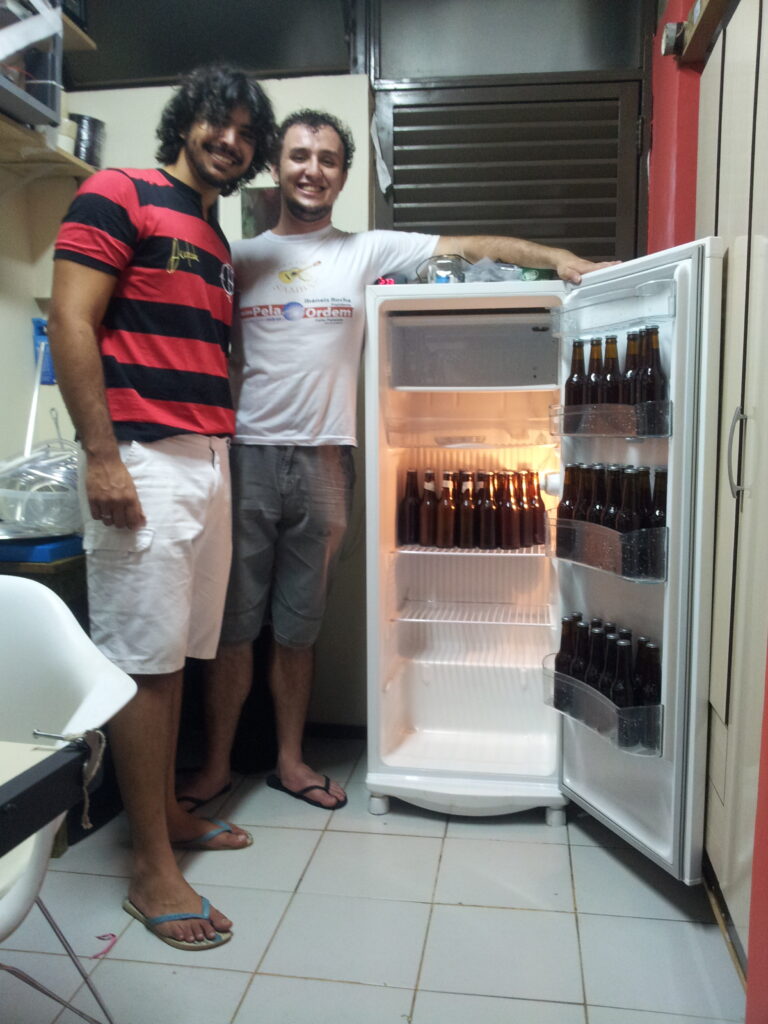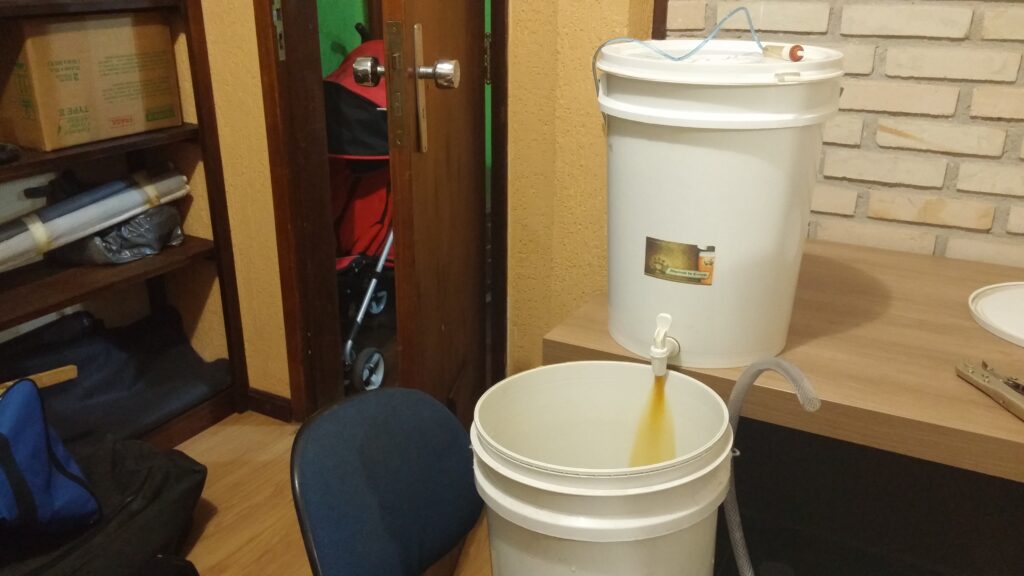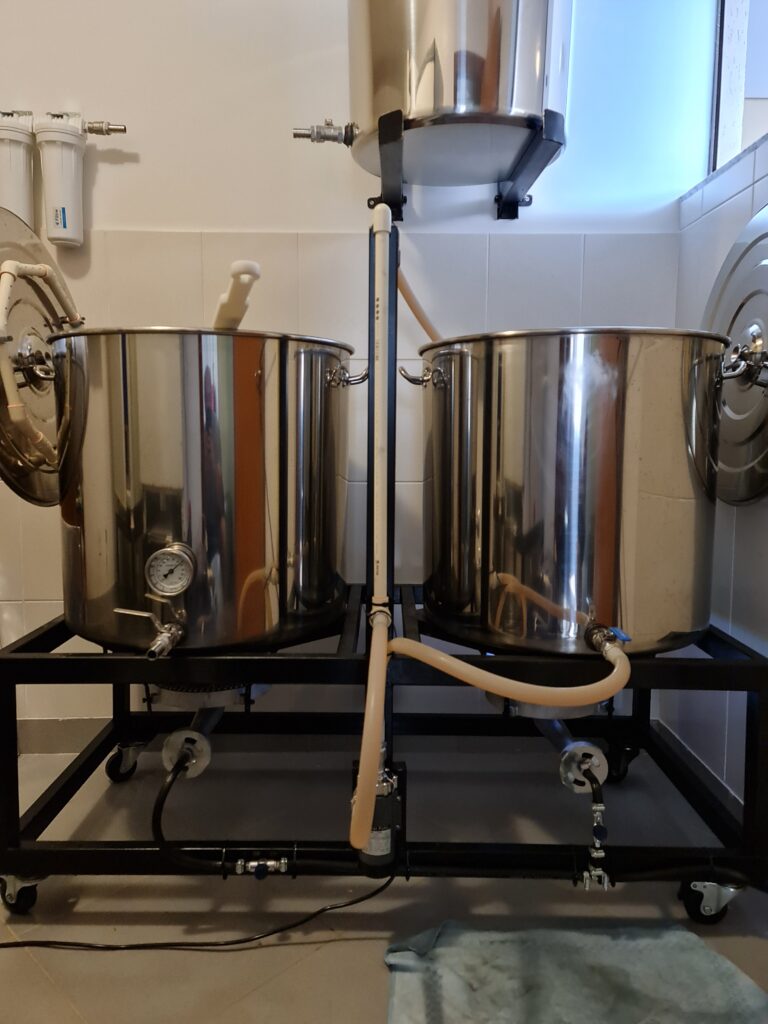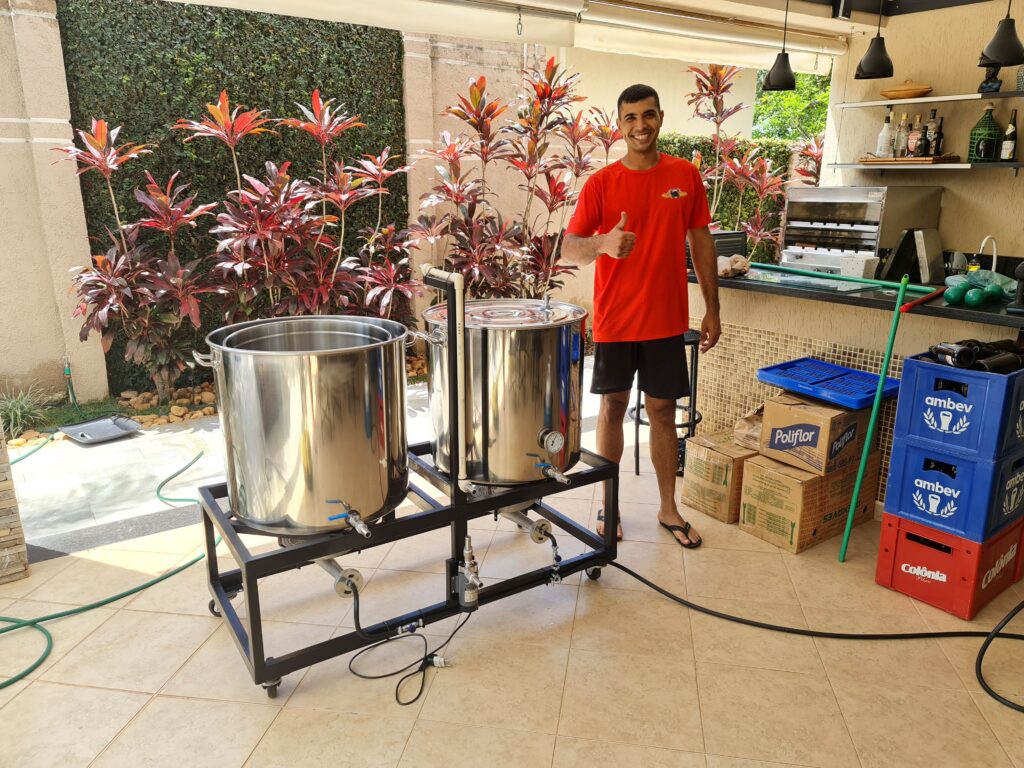Even though is a hobby, this is one of the projects I’m most fond of. The desire of making our own beer has driven me and my dear friend Gigante on several attempts throughout the years. Our very first successful batch was fermented at my father’s flat’s small room (one we used as do-it-all workshop) around 2010 with a “brew starting kit” and a PDF of a book “How to Brew” by John J. Palmer.
Not being enterily sure if my dear dad was very enthusiastic about this project, specially considering the strong barley and hops smell from many litters of broth being boiled in a flat, I thought it would be best not to ask.


Nevertheless, we would eventually carry on more attempts, and our lives would carry on changing. Gigante become very knowledgeable regarding the science of brewing and built a significant brewing structure whilst I managed to acquire a skill or two with coding and automation.
Following on, despite the life challenges and distances the project moved forward slowly. Being really Gigante doing all the work, for I moved to the United Kingdom and would only occasionally visit Brazil and wasn’t much help at all. But now we’ve been trying to add some automation to the process in order to make it easier and more accurate to Brew beer. And this shows how the project is doing so far


The automation side of this project is attempting to control and regulate the temperature of two fermentators (inside modified refrigerators) at the same time, but individually. Our biggest goal is to be able to control the fermentation temperature to the tenth of centigrade per hour and make it follow a clear route to optmize the fermentation. Although we will be satisfied once we can monitor everything online.
For now, gigante has set up two PID automatic controller which he has to regularly (maybe once every two days or daily) visit to make sure the next set point is achieved – and that everything is in order.
So to start the automation we begin by replacing the current system with a raspberry pi and some themopars.
Gigante has managed to built a nice case to hold all the items we currently need. And we were able to test everything with a certain degree of success. Although we’re having some issues with sensors disappearing from the Raspberry Pi which I attribute to the Brazilian Power Grid instability.
The system is ran on a Node-Red Platform that keep track of the last temperatures. As the photos demonstrate.
Our next step, hopefully in October 2023 is to fully test the system.